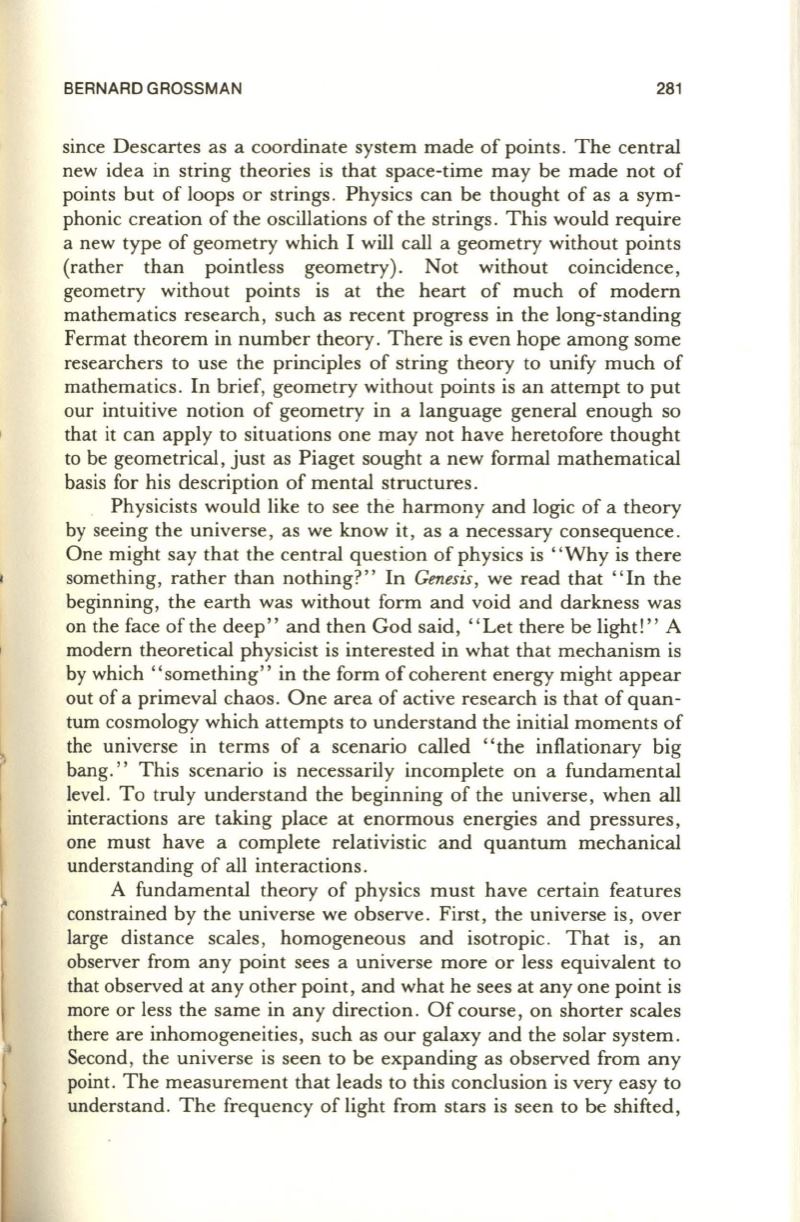
BERNARD GROSSMAN
281
since Descartes as a coordinate system made of points . The central
new idea in string theories is that space-time may be made not of
points but of loops or strings . Physics can be thought of as a sym–
phonic creation of the oscillations of the strings . This would require
a new type of geometry which I will call a geometry without points
(rather than pointless geometry) . Not without coincidence,
geometry without points is at the heart of much of modern
mathematics research , such as recent progress in the long-standing
Fermat theorem in number theory . There is even hope among some
researchers to use the principles of string theory to unify much of
mathematics . In brief, geometry without points is an attempt to put
our intuitive notion of geometry in a language general enough so
that it can apply to situations one may not have heretofore thought
to be geometrical, just as Piaget sought a new formal mathematical
basis for his description of mental structures .
Physicists would like to see the harmony and logic of a theory
by seeing the universe, as we know it, as a necessary consequence .
One might say that the central question of physics is " Why is there
something, rather than nothing?" In
Genesis ,
we read that "In the
beginning, the earth was without form and void and darkness was
on the face of the deep" and then God said, "Let there be light!" A
modern theoretical physicist is interested in what that mechanism is
by which "something" in the form of coherent energy might appear
out of a primeval chaos. One area of active research is that of quan–
tum cosmology which attempts to understand the initial moments of
the universe in terms of a scenario called "the inflationary big
bang." This scenario is necessarily incomplete on a fundamental
level. To truly understand the beginning of the universe, when all
interactions are taking place at enormous energies and pressures,
one must have a complete relativistic and quantum mechanical
understanding of all interactions.
A fundamental theory of physics must have certain features
constrained by the universe we observe . First, the universe is, over
large distance scales, homogeneous and isotropic. That is, an
observer from any point sees a universe more or less equivalent to
that observed at any other point, and what he sees at anyone point is
more or less the same in any direction . Of course, on shorter scales
there are inhomogeneities, such as our galaxy and the solar system.
Second , the universe is seen to be expanding as observed from any
point . The measurement that leads to this conclusion is very easy to
understand. The frequency of light from stars is seen to be shifted ,


